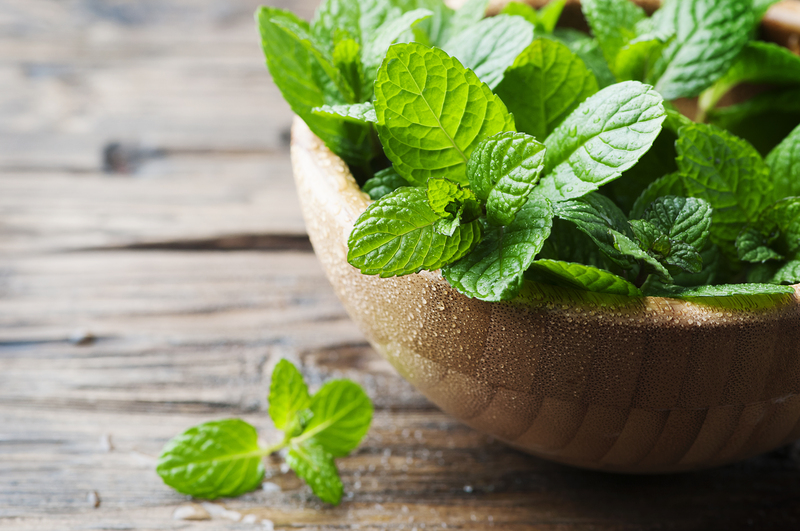Achieving Pristine Curtains: Cleaning Tips
Posted on 06/06/2025
Achieving Pristine Curtains: Comprehensive Cleaning Tips
Are your curtains looking a bit dull or dusty? Have you ever wondered how to maintain that fresh, luxurious appearance in your living spaces? Keeping your curtains pristine is an essential part of home hygiene and aesthetics. Curtains not only enhance a room's decor but also act as a filter for dust, allergens, and odors. In this comprehensive guide, we'll explore effective curtain cleaning tips and tricks to achieve and maintain spotless curtains using a range of curtain cleaning methods, from routine maintenance to deep-cleaning solutions.

Why Clean Curtains Regularly?
Clean curtains are not only visually pleasing but also crucial for your health. Over time, curtains accumulate dust mites, pollen, pet hair, and various airborne contaminants. Left unattended, these pollutants can impact indoor air quality and potentially trigger allergies or respiratory problems.
- Improves air quality: Regular cleaning eliminates dust and allergens.
- Enhances appearance: Well-maintained curtains give rooms a crisp, inviting look.
- Prolongs fabric life: Removing dirt and pollutants prevents fabric degradation.
- Removes odors: Freshens fabric and eliminates unpleasant smells.
Understanding Your Curtain Fabric
Before you begin cleaning your curtains, always check the care label attached to the fabric. Different materials require specific cleaning approaches:
- Cotton and Linen: Usually machine-washable, but might require cold water and mild detergents.
- Synthetics (polyester, nylon): Typically safe for machines, but avoid high temperatures.
- Velvet: May need professional cleaning--spot clean with care at home.
- Silk: Delicate and prone to water damage; dry cleaning is recommended.
- Wool: Should be handled with caution; often requires dry cleaning.
Pro Tip: Always test any cleaning method on a small, inconspicuous area before full application.
Essential Curtain Cleaning Methods
There are several ways to keep your curtains spotless and fresh. Choose an ideal method depending on the fabric and the level of soil or stains.
1. Regular Maintenance: Dusting and Vacuuming Curtains
One of the simplest curtain cleaning tips for everyday care is preventing dust buildup:
- Shake curtains out weekly: Gently shake your curtains to dislodge dust and debris.
- Vacuum using an upholstery attachment: Run the vacuum from top to bottom every 1-2 weeks. This is especially important for heavy drapes or curtains with textured fabrics.
- Use a lint roller for pet hair: If you have pets, a sticky lint roller efficiently removes fur and hair.
Routine dusting keeps your curtains cleaner for longer and minimizes allergens in your home environment.
2. Machine Washing Curtains
Many lightweight and durable curtains can be machine washed, but always consult the care label first. Here's how to achieve fresh, clean curtains using your washing machine:
- Remove all hardware: Take off hooks, rings, and brackets to prevent damage.
- Pre-treat stains: Spot-treat any visible marks using a gentle stain remover.
- Select a gentle cycle: Use cold water and a mild detergent for best results. Avoid using bleach unless your curtains are plain, white cotton.
- Choose a low-spin setting: Prevent wrinkles and fabric stress by using the lowest spin cycle.
- Hang to dry: Rehang the curtains while slightly damp for a natural finish with fewer creases.
Expert tip: If your washing machine is too small for large drapes, consider taking them to a laundromat or using a commercial-sized washer.
3. Hand Washing Delicate Curtains
Some fabrics, such as lace, silk, or embroidered curtains, are best washed by hand to prevent shrinking and fabric distortion. Follow these steps:
- Fill a large basin or bathtub with lukewarm water.
- Add a mild detergent: Swish to disperse the detergent.
- Submerge and soak: Carefully immerse your curtains and gently agitate them. Do not scrub or wring.
- Rinse thoroughly: Drain soapy water and refill with clean water to remove all detergent.
- Squeeze out water gently: Press fabrics between towels instead of twisting.
- Hang to dry: Lay flat if possible, or hang to dry out of direct sunlight to avoid fading.
4. Steam Cleaning Curtains
Steam cleaning is a powerful way to refresh heavy or non-removable curtains without taking them down. It also effectively kills dust mites and bacteria. You will need a handheld garment or upholstery steamer:
- Test a hidden area first to ensure the fabric tolerates steam.
- Hold the steamer a few inches away from the surface.
- Move the steamer slowly from top to bottom, allowing steam to penetrate deeply.
- Let curtains dry fully with good ventilation to prevent mold or mildew growth.
Bonus: Steaming also releases wrinkles, helping your drapes look crisp and polished after cleaning.
5. Dry Cleaning Curtains
Some curtain materials--like silk, wool, or blended fabrics with intricate detailing--should only be dry-cleaned. If the care label says "dry clean only," do not wash them at home. Professional cleaners use special solvents that preserve delicate fibers and dyes.
6. Spot Cleaning Stains from Curtains
For isolated marks, spots, or stains, use a targeted cleaning approach:
- Blot don't rub: Dab gently with a clean, damp cloth to lift stains.
- Mild soapy solution: Mix a gentle detergent with water and use a soft sponge.
- Rinse gently: Use a damp towel to blot away soap residue.
- Dry quickly: Blot with a dry towel or use a hairdryer on the cool setting to avoid watermarks.
This approach is effective for dealing with food spills, ink, pet stains, or mildew patches before they become permanent.
Best Practices for Pristine Curtain Maintenance
Achieving spotless curtains isn't just about deep cleaning; regular maintenance goes a long way. Consider these time-tested best practices:
- Avoid direct sunlight: UV rays can fade fabrics; use sheers or blinds to protect colored curtains.
- Rotate and rearrange: Switch sides or rotate curtains for even wear and exposure.
- Air out regularly: Open windows or shake out curtains on breezy days to keep them smelling fresh.
- Deal with stains promptly: Address spills immediately to prevent setting.
- Iron with care: Use a low-heat setting appropriate for the fabric. A slightly damp cloth can help achieve a smooth finish when ironing.
Natural and Homemade Curtain Cleaning Solutions
Don't want to use harsh chemicals? Try these gentle, eco-friendly cleaning methods:
- White vinegar and baking soda: Removes odors and disinfects. Mix into a spray bottle with water for a quick freshening solution.
- Lemon juice: Erases yellowing or water stains. Combine with salt for tougher stains.
- Cornstarch: Acts as a gentle abrasive for spot cleaning grease or oil stains.
- Mild baby shampoo: Ideal for delicate fabrics and effective against dirt.
Note: Always spot-test your homemade solution before applying to the entire curtain.
Specialized Curtain Care Tips
Taking Care of Blackout Curtains
Blackout curtains have a special lining designed to block light and insulate rooms. They often require extra care:
- Follow the care label: Many blackout curtains are not suitable for machine washing.
- Spot clean when needed: Use a damp cloth and mild soap, avoiding the coated side.
- Air dry: Never use a hot dryer, as heat can damage the lining.
Maintaining Sheer Curtains
Sheer curtains add elegance but can look dingy when dirty. To keep them spotless:
- Wash with extra care--preferably by hand or in a mesh laundry bag.
- Use cold water and mild detergent.
- Hang to dry immediately to avoid wrinkles.
Tips for Curtains with Embellishments or Beading
If your curtains feature beads, embroidery, or attached ornaments:
- Hand wash gently, supporting the fabric to prevent stress on decorations.
- Do not wring or twist embellished sections.
- Consult a dry cleaner if in doubt.

Easy Preventative Measures for Ongoing Curtain Cleanliness
- Install air purifiers or encourage good airflow to reduce dust accumulation on curtains.
- Vacuum and sweep regularly to minimize the amount of dust in your home.
- Keep windows closed during high-pollen or dusty days to limit deposits.
When Should You Replace Your Curtains?
Even with the best curtain maintenance and cleaning routines, fabrics inevitably lose their strength and beauty over time. Here's when you might consider replacement:
- Persistent stains or discoloration that won't come out
- Significant fading, tearing, or thinning of the fabric
- Fraying along edges, seams, or attachment points
- Presence of mildew or mold that cannot be eliminated
Conclusion: Pristine Curtains and a Healthier Home
With regular care and the right cleaning techniques, achieving and maintaining pristine curtains is an attainable goal that will revitalize your home ambiance and promote a healthier environment. By understanding your fabric, employing the correct cleaning methods, and following preventative maintenance tips, you ensure your curtains not only look their best but also last for years to come.
Incorporate these expert curtain cleaning tips into your household cleaning routine--and let your drapes make a fresh, immaculate statement every day!





